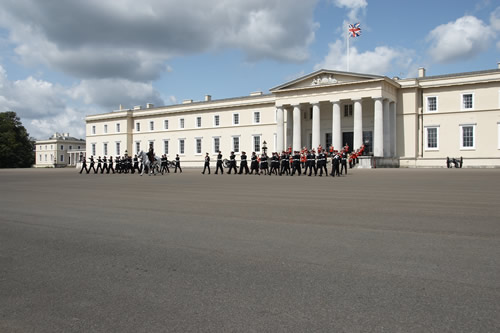Giving to charity: who digs the deepest?
The better off donate more than the poor - but research shows that postcodes also define areas of generosity. Steve Lodge finds out why.
Who gives the most to charity? Despite the convention that the poor are more generous than the rich, a Cass analysis of regional giving in Britain shows that higher-income households are generally more likely to give to charity - and to give more. Households in Northern Ireland and north west London - both areas with a strong religious tradition - were also found to be generous donors relative to their income, which may support the view that there is an additional link between faith and giving.The study* by Professor Cathy Pharoah, Co-Director of the Centre for Charitable Giving and Philanthropy, and Tom McKenzie, a research fellow in the Faculty of Management both at Cass, shows a marked variation in charitable giving between the UK regions, largely reflecting income differences. Of households in the highest income bracket in England, Scotland and Wales, more than 40 per cent give to charity, compared with only 20 per cent of those whose income is in the lowest tenth. According to the study, a higher proportion of households in southern England give to charity than in the less wealthy Midlands and northern England.
Religious impetus
However, households in Northern Ireland are the most likely to give, with more than 46 per cent across all income groups - and almost 60 per cent of the highest tenth of earners - donating to charity, reflecting what the study calls an "historically strong culture of giving". Professor Pharoah believes that the high level of church attendance in Northern Ireland provides an impetus and framework for giving. She says: "It's not an old-style tithe, but giving generously is something people feel they should do. Attending a place of worship provides a regular opportunity to give." In north west London, even though only 27 per cent of households give to charity, the average donation is high both in absolute terms, at £11.55 a week (about £600 a year) and as a percentage of total household spending (2.17 per cent), again suggesting an unusually strong culture of giving. Professor Pharoah ascribes this to the relatively large Jewish community in the area, as well as higher-than-average income levels. The implied link between faith and giving echoes previous studies that have concluded that the religiously inclined are more likely to donate to charity. Britons who consider religion to be very important in their lives were found to be nine percentage points more likely to give than those who do not consider religion to be important at all. Those for whom religion is "quite important" are four percentage points more likely to give, according to previous research by Professor Pharoah.
Invisible donations
However, she also questions whether surveys of donations to charity fully capture the picture of faith-related giving among, for example, Muslim households, where those giving to poorer relatives or within a community may not categorise this as "donating". Individuals' religious beliefs may give them an ideological commitment to support the work of similarly minded organisations, which could contribute to the fundraising success of religiously inspired charities such as Barnardo's, Christian Aid and the Salvation Army. According to the Charities Aid Foundation (CAF), which helps charities with their fundraising, and the National Council for Voluntary Organisations (NCVO), religiously focused charities receive the greatest share of individuals' donations at 15 per cent of the total. "Religion is a strong driver of giving," says Richard Harrison, CAF's Director of Research. Nevertheless, the secular Oxfam is Britain's largest international development charity. Cathy Ferrer, its Fundraising Director, says that while Oxfam does not target higher income groups and gets the bulk of its donations from middle earners, it "over-indexes" in attracting funds from wealthy professionals - ABC1s and households in south east England. CAF figures show that, across the UK, donors in the top income band gave an average of £43 a month in 2008-09, compared with £21 a month from those on the lowest incomes. However, Richard Harrison warns that while it could be "very tempting" to target fundraising efforts at higher earners in tough economic times when donation levels are under pressure, this relatively "easy win" could detract from getting a charity's message across.
The Big Society
More than 28 million Britons make charitable donations every year, raising an annual total of about £10 billion, according to CAF, but the economic downturn took its toll. Almost one in five Britons say they gave less to charity in 2009, according to CAF research, and donations remain £700 million below pre-recession levels. Professor Pharoah questions whether this paring back of charitable donations as well as the link between income levels and giving could undermine UK Government plans to encourage more community self-help - the so-called Big Society. "Because participation in giving is likely to be lower in the poorer parts of the country, the challenge for building the Big Society and developing community resources may be greater in just those areas where help and support are most needed," she says. Just as the religiously oriented often have a framework for giving through their place of worship, charities may benefit from focusing fundraising efforts in other environments where people could be amenable to requests for donations. For example, free events, such as music concerts - which could prove particularly popular when household budgets are squeezed - might be successful targets, Professor Pharoah suggests, as people who can't afford ticket prices may still feel able to give to charity.
*UK Household Giving - New Results on Regional Trends 2001-08; Tom McKenzie and Cathy Pharoah.
Steve Lodge is a personal finance correspondent at the Financial Times.




